What is Iambic Pentameter?
Iambic pentameter is a type of meter in poetry, consisting of ten syllables in each line. The syllables are divided into five pairs, or "feet," with each pair containing an unstressed syllable followed by a stressed syllable. This creates a da-DUM, da-DUM, da-DUM, da-DUM, da-DUM rhythm.
Identifying Iambic Pentameter
To identify iambic pentameter, look for lines of poetry with ten syllables that follow the unstressed/stressed pattern. For example, the famous line "Shall I compare thee to a summer's day?" from Shakespeare's Sonnet 18 is written in iambic pentameter.
Usage in Poetry
Iambic pentameter is commonly used in sonnets, including Shakespearean and Petrarchan sonnets. It is also prevalent in blank verse, which is unrhymed iambic pentameter. Many classic poems and works of literature use iambic pentameter to achieve a melodic and rhythmic quality in the language.
Writing in Iambic Pentameter
To write in iambic pentameter, pay attention to the syllable count and the stressed/unstressed pattern of each line. Experiment with different sentence structures and word choices to maintain the rhythm and flow. Practice reading and listening to iambic pentameter poetry to develop a feel for the natural cadence of the meter.
Examples of Iambic Pentameter
Below are a few examples of lines written in iambic pentameter:
."To be, or not to be, that is the question" - from Shakespeare's Hamlet
"But, soft! what light through yonder window breaks?" - from Shakespeare's Romeo and Juliet
"When I consider how my light is spent" - from John Milton's "Sonnet XIX"
◂English Language Arts Worksheets and Study Guides Second Grade. Rhyming Words
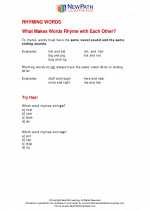
 Activity Lesson
Activity Lesson
 Activity Lesson
Activity Lesson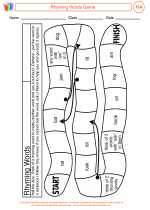
 Worksheet/Answer key
Worksheet/Answer key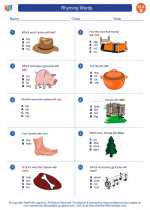
 Worksheet/Answer key
Worksheet/Answer key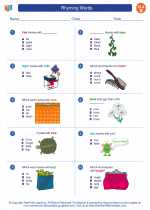
 Worksheet/Answer key
Worksheet/Answer key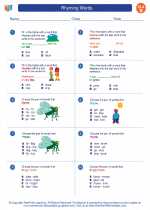
 Worksheet/Answer key
Worksheet/Answer key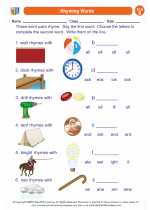
 Worksheet/Answer key
Worksheet/Answer key
